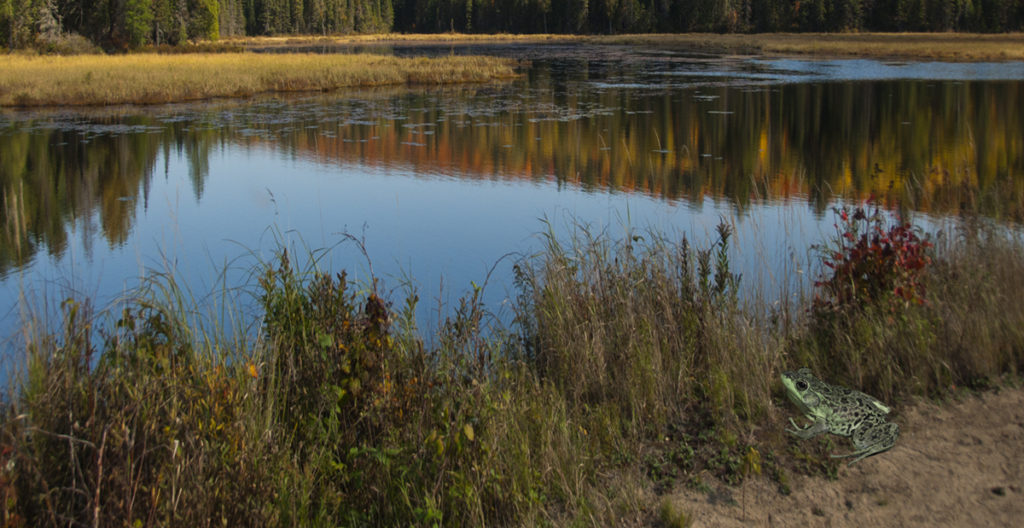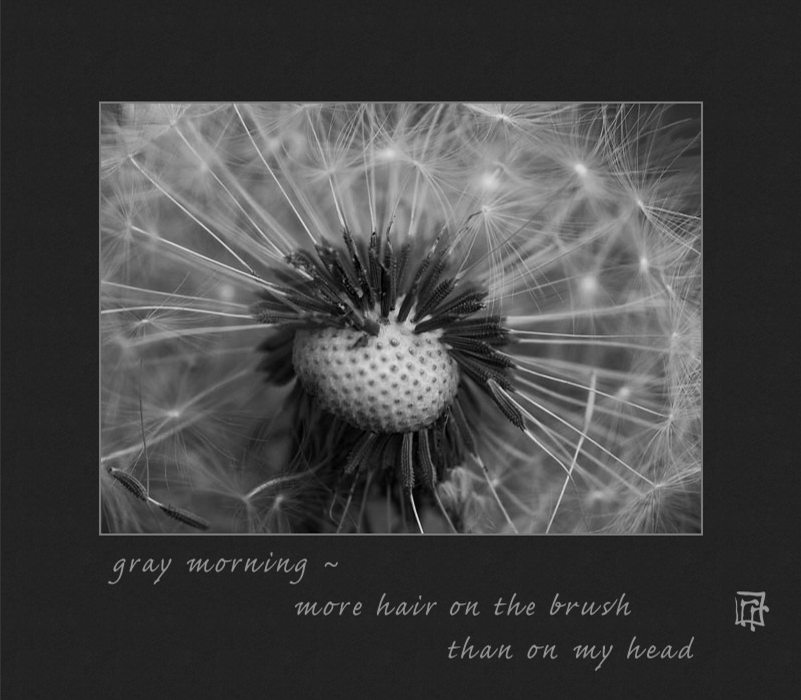Presently I serve as a consulting editor for Drifting Sands Haibun and as Encore Editor for Contemporary Haibun Online. My partner Nancy and I live on a rural acreage in Halton Hills, Ontario, Canada. Both retired, we enjoy hiking in the Rocky Mountains and Utah’s Canyonlands, walking in the nearby mixed-hardwood forests, bicycling our hilly, twisting rural roads, canoeing Ontario’s Muskoka lake country, and most of all, we love avoiding Toronto and the infamous hwy 401. Nancy is a fibre arts crafts person and I’m a writer. We both enjoy photography. I have a recurring dream that in a previous life I’m a university professor teaching social sciences.
My Journey on Basho’s Pond

It was about 20 years ago, after an enchanting photography visit to the Kurimoto Japanese Garden that my writing journey started. I decided to do a photography website showcasing the Garden and wanted include Asian poetry, which I didn’t know much about, to complement the images. On a search, I discovered haiku which, like photography, is about simplification and involves expressing the heart of visual experiences.
Next I decided to try writing stand alone haiku and haiku for my images (haiga) – after all, who doesn’t want to be a poet? I thought it would be easy to create 17 syllables in 3 lines. After showing my first 3-liners on haiku forums, I was quickly disabused of the notion that composing haiku is simple. One well-published haijin (haiku poet) said that my haiku was “an aphorism, and not a very good one at that.” Ouch, that hurt!
In time, with a lot of reading and practice and coaching, I was able to succeed in having a few haiku and haiga published, and success inspired me to do something I’d always wanted to do – write about personal experiences to share with friends and family. I read read other genres in the journals, found my way to haibun pieces and thought, this is more what I want to do – tell stories about real personal experiences and add haiku. For some reason, I didn’t just want to write personal essays or memoir snippets. I liked the idea of finishing with a haiku.
While initially I aimed my writing at family and friends, over time I wanted some sense of validation that my writing was okay. I knew I couldn’t get that from family and friends – they’re thoughtfully diplomatic. So I began to submit my work to editors, themselves established writers, to learn whether they thought my work was good enough to publish and show to their readers. I was happy to get my work into any journal, but over time I want my work to be placed in journals that are difficult to get into. At the start, similar to my initial attempts at haiku, the reactions I got went like this: “Interesting story but you need to understand and be able to write haiku-like prose.” Ouch, that hurt again!
And again, in time, I succeeded in having my haibun published. At this point, I’ve had more than 200 accepted in a variety of journals which importantly are edited by different editors with a variety of tastes. Why important? I believe that most editors have a mission to please their readership and thus they try to select the best of the submissions. And I’ve learned that each editor has his or her own tastes about haiku, haibun prose, and the marriage of the prose and haiku.
Even with success, haiku, the necessary little partner of haibun’s prose, remains to this day my Achilles heel. And why shouldn’t it be? As one famous haiku poet put it, “I hope to write a few good haiku in my lifetime.”
Community Service
While learning my trade in haibun, haiku and haiga and finding my own expressive style, or what some call “voice,” I was appreciative of the work that volunteer editors put into reading and accepting (or not), and making suggestions for submissions to their journals. I received great help from several editors. So I decided to give back to the haiku genre community. Early on, I designed the Simply Haiku website. Under the editor’s leadership, it evolved into a very good multi-haiku genre journal. Then I designed (or helped with the design) of other journals foused on haibun including Contemporary Haibun Online, Haibun Today, A Hundred Gourds and Cattails.
At some point, I was asked to serve as an haibun editor and I edited for the World Haiku Review, A Hundred Gourds, Simply Haiku. For a long period, I served as a haibun editor and then as Editor-in-Chief of Haibun Today.
As I write this I’ve stepped down from 10+ years of editing, and now I help out with technical issues and advice to various journals. Right now, I’m helping format Drifting Sands Haibun and training volunteers how to format the journal. I’m Also presently the Editor of the Encore Section of Contemporary Haibun Online where I select “classic articles” which have been all but lost and should be read by new writers and those wishing to improve their understanding of haibun.
A Favourite Published Haibun
The Bathrobe
One rack in the men’s shop contains richly colored robes with fancy lapels, threads a James Bond might wear while romancing one of his many women. I reach for bold red and gold plaid with shiny black lapels.
Suddenly awake, anxious, I glance at the hook on which my robe hangs. Relief! Still there.
There are large patches where I’ve had my seamstress salvage it after large holes grew in the wrong places.
“Robes aren’t that expensive. Why not just buy a new one?” my seamstress, a very practical woman, had suggested.
“No,” I said, “I like this robe.”
“Do you want exactly the same kind and color of cloth?”
“It’s just a robe. Do your best.”
Having had it patched didn’t relieve my fears. When my wife looks at it, I see the rag basket in her eyes. When it falls to the floor, the dog happily sleeps on it.
Men reading this know that the robe and I won’t soon be parted. No one else sees it and only my wife is concerned about a little flesh hanging out here and there.
I pull the comforter over my head and drift back to sleep.
lucky moon –
even when waning
no one threatens to replace you
. . .
Note: haibun published in Haibun Today & the Contemporary Haibun Anthology.
A Favourite Haiga

Websites, Blogs and Books
- Haibun & Haiku Blog
- Day’s End: A Multi-contributor Haiga Website about Aging
- Romance Under a Waning Moon: Multi-contributor Late-in-Life Haiga
- Wabi Sabi Website
- Haiku, Haibun and Haiga information website
- Landmarks: A Haibun Collection
- Photography website
Publications in Drifting Sands Haibun
Essays in DSH and Elsewhere
- What Are We Writers Up To, Really! (DSH)
- The Writer’s Gaze (Contemporary Haibun Online)
- Commentary on Basho’s “Hiraizumi” (Haibun Today)
- Characteristics of Contemporary English-language Haibun (Haibun Today & CHO)
- A Title is a Title is a Title, or Is It? Titles in Haibun (Modern Haiku, Haibun Today)
~ End ~
![]()
Because humility might be a factor in what you’ve presented above, I would like to mention your book, Landmarks, available at Amazon, and your work on a second collection of haibun which should be published relatively soon. I’ll also mention that you’ve had a major influence in multiple ways on a lot of haibun writers by creating writing critique groups and through the feedback you have given as an editor. In turn, you have introduced the genre to friends and their associates around the campfires in Canyonlands, Utah and the Wilmore wilderness.